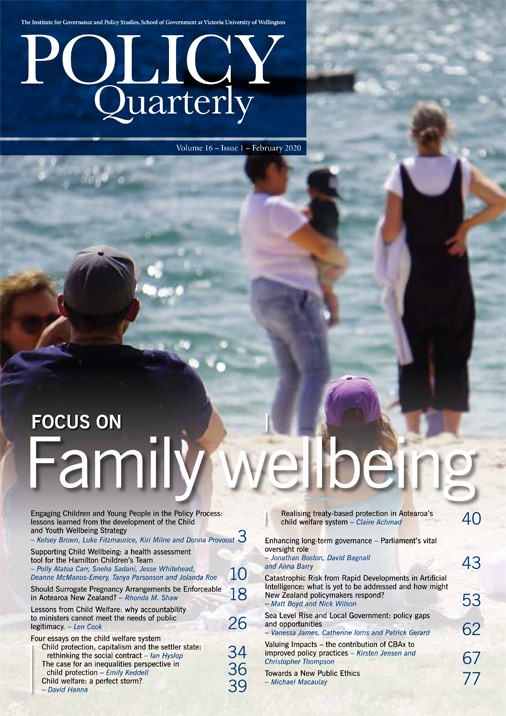Engaging Children and Young People in the Policy Process
lessons learned from the development of the Child and Youth Wellbeing Strategy
DOI:
https://doi.org/10.26686/pq.v16i1.6349Keywords:
children’s participation, youth participation, voice, wellbeing, engagement, childrenAbstract
Policy is improved when those most affected are involved in the policy development process. This article describes the approach taken by the Office of the Children’s Commissioner and Oranga Tamariki – Ministry for Children to engaging children and young people in the development of the Child and Youth Wellbeing Strategy, a cross-government initiative designed to drive action on child and youth wellbeing. It outlines key findings from the engagements and describes the impacts those insights had. It also identifies critical enablers of the project and key lessons learned.
We found the legislative changes which required children to be consulted and broader attitudinal changes towards involving children and young people in policymaking processes were key enablers. We found the project had a tangible impact not only on the Child and Youth Wellbeing Strategy itself, but also for the children and young people involved and their communities, and on attitudes towards children and young people’s voices in general. We hope successive governments will continue to engage with children and young people to measure progress on child and youth wellbeing against what they have said matters most to them.
Downloads
Downloads
Published
Issue
Section
License
Permission: In the interest of promoting debate and wider dissemination, the IGPS encourages use of all or part of the articles appearing in PQ, where there is no element of commercial gain. Appropriate acknowledgement of both author and source should be made in all cases. Please direct requests for permission to reprint articles from this publication to Policy-Quarterly@vuw.ac.nz.



